 April 4, 2024
Under 30 Minutes
April 4, 2024
Under 30 Minutes  April 4, 2024
Under 30 Minutes
April 4, 2024
Under 30 Minutes Pillowy, soft ricotta gnudi – yes, they are as good as they sound. A traditional Italian dish from Tuscany, gnudi are like lighter, cheese-filled cousins to gnocchi, made with minimal ingredients and incredibly easy to prepare. These ricotta gnudi are served with a spicy homemade marinara, making them a recipe worth making all year round. While they require a bit of time to set, they are absolutely perfect for a Sunday dinner and are sure to impress any gathering.
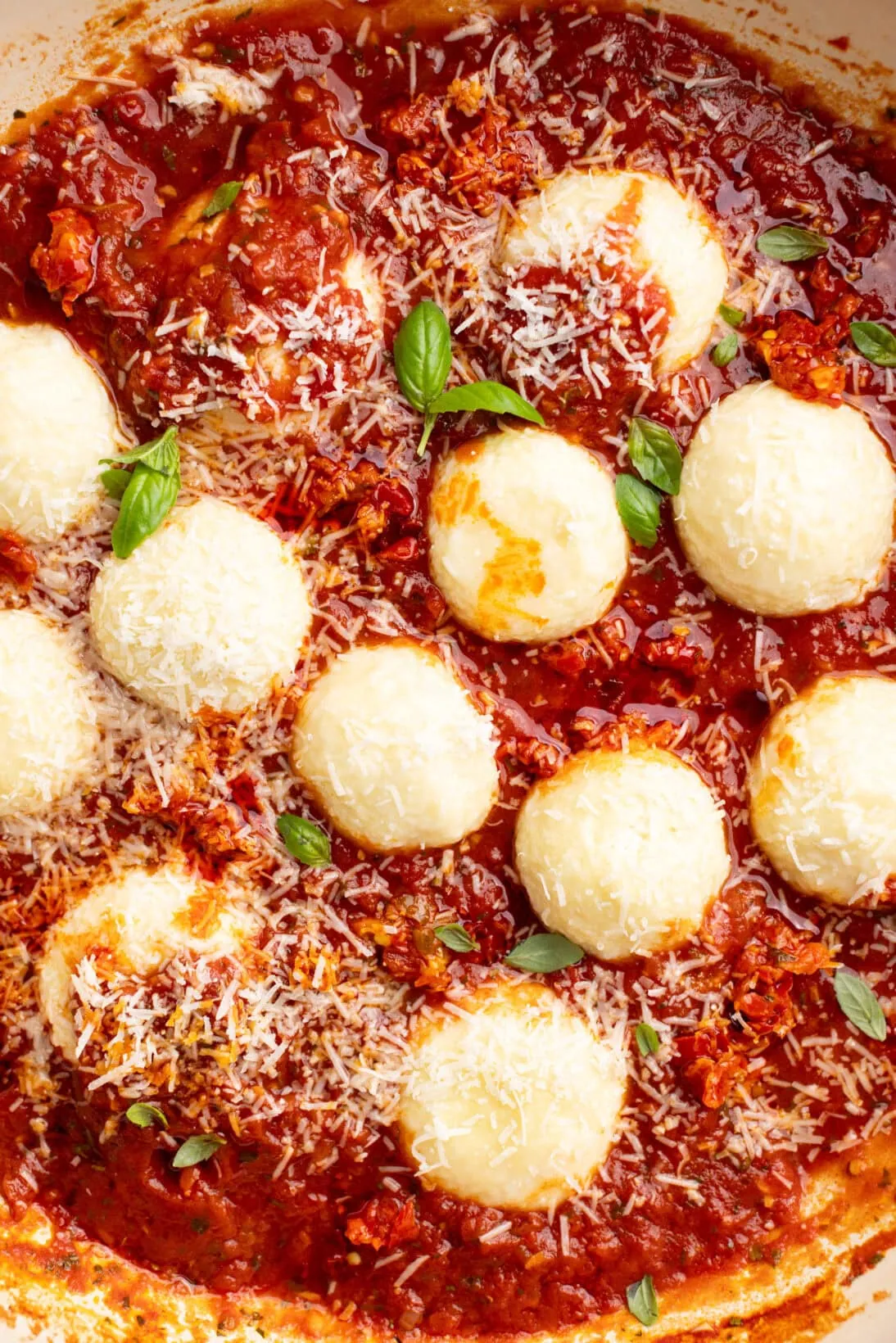
Also known as malfatti, gnudi directly translates to “naked” and is essentially ravioli without the pasta. This soft pillowy Italian dish can be best described as a dumpling vs. the similar potato or ricotta gnocchi which has more of a dough like texture.
Gnudi is soft and creamy and can be enjoyed on its own if you like. Here, we’re pairing it with a spicy homemade tomato sauce to balance the richness of the cheese. Another great way to dress it up is simply tossing it with browned butter and sage leaves. The best part? Gnudi is relatively easy to make. While there are a few pitfalls to avoid, it’s a rustic dish that doesn’t need to be perfect.
This is likely the most important step. If your gnudi fell apart during cooking, it’s probably because they didn’t rest long enough. After forming, the gnudi need to rest on a sheet tray in the fridge for at least an hour to allow the outside to cure slightly, forming a protective skin that holds the creamy ricotta inside. Personally, I prefer closer to 2 hours, but 1 hour should be sufficient.
If you’re tempted to skip this step because you’ve seen recipes without a wait time, keep in mind that those versions likely have a firmer texture with more flour in the mix. This recipe uses minimal flour to achieve a perfectly pillowy texture, resulting in gnudi that are creamy and gooey on the inside.
The type of ricotta you use matters. First, for flavor—a more flavorful ricotta will yield more flavorful gnudi. Higher-quality ricotta typically contains more moisture than mainstream store-bought brands. If your ricotta is on the wetter side, it’s essential to strain it, either the night before or a few hours ahead, to remove as much moisture as possible.
A wet gnudi will break apart during cooking, no matter how long you rest them in the fridge. If your ricotta is still too wet after straining, you can adjust the flour levels, which I’ll discuss below. Be sure to check the note on buying ricotta under the ingredients list as well.
To a certain extent you can tell if your gnudi will survive. Can you easily form them into soft but firm balls? No? Then chances are they will not survive.
These ricotta gnudi are gently “boiled” before being tossed into the sauce. By “gently,” I mean your water should be just below a simmer—avoid bringing it to a full boil. Does cooking them at this temperature take a bit longer? Yes, but this gentle approach almost guarantees they’ll hold their shape.
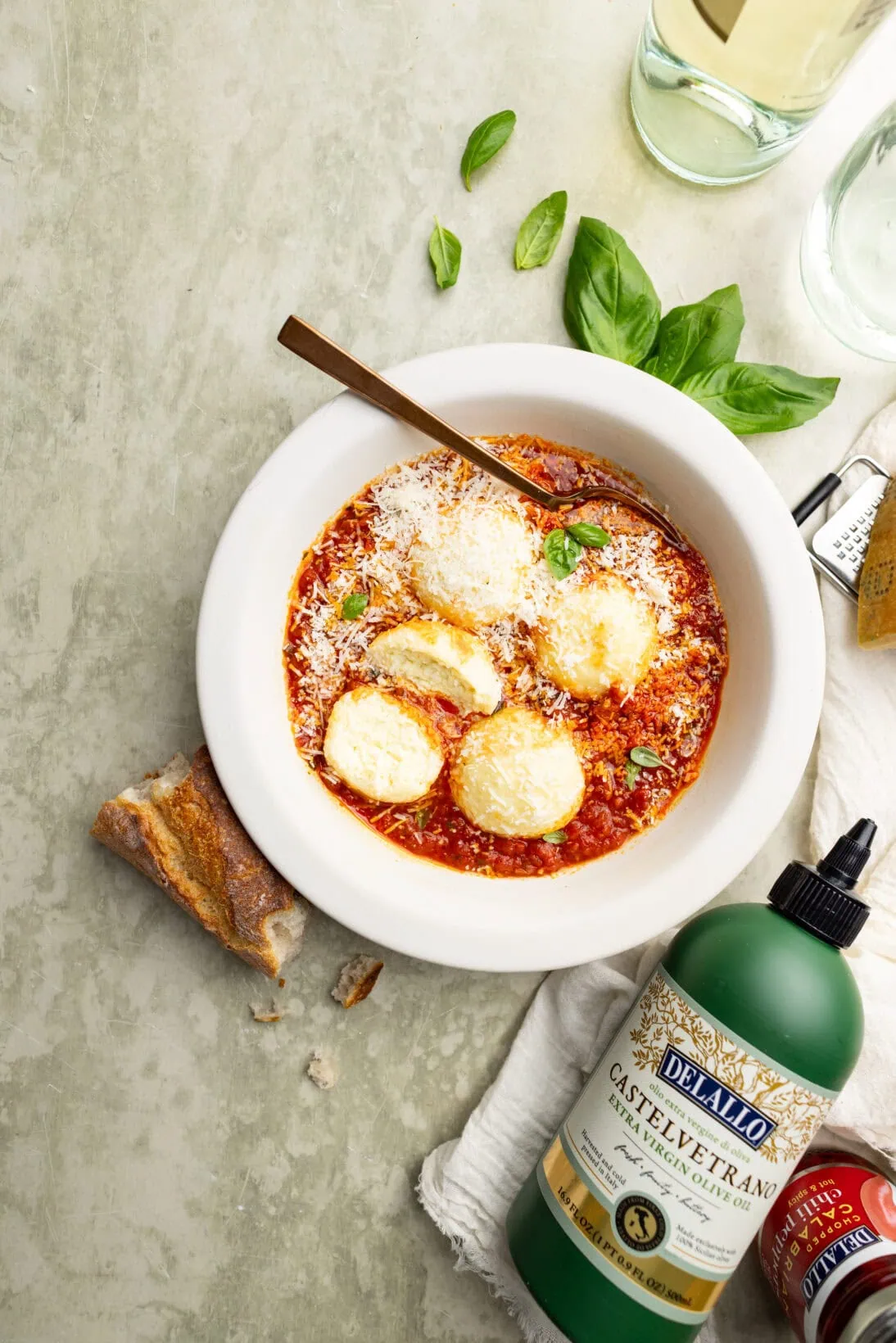
Please note that the recipe card lists ingredient quantities in ounces for items like ricotta, semolina flour, and cheese. Since gnudi can be delicate and prone to falling apart, weighing your ingredients is more precise. However, I’ve also provided cup measurements for those without a kitchen scale.
This is one of my favorite easy sauces to make. With minimal cook time and just a few ingredients, it delivers a bright, bold flavor. Feel free to use this simple sauce for pasta dishes as well.

*Strain the Ricotta – If you’re using fresh ricotta or one that’s a bit looser than typical store-bought varieties, you’ll need to strain it beforehand. Do this either the night before or a few hours before forming. Place the ricotta in a fine mesh strainer or cheesecloth over a bowl. I prefer using a handheld fine mesh strainer since it’s usually easy to find a large bowl to set it over. If you use a handheld strainer, cover the top of the ricotta with plastic wrap before placing it in the fridge.
For the cheesecloth method, tie the cheesecloth to a wooden spoon to suspend the ricotta over a bowl. Then, place it in the fridge to strain until ready.
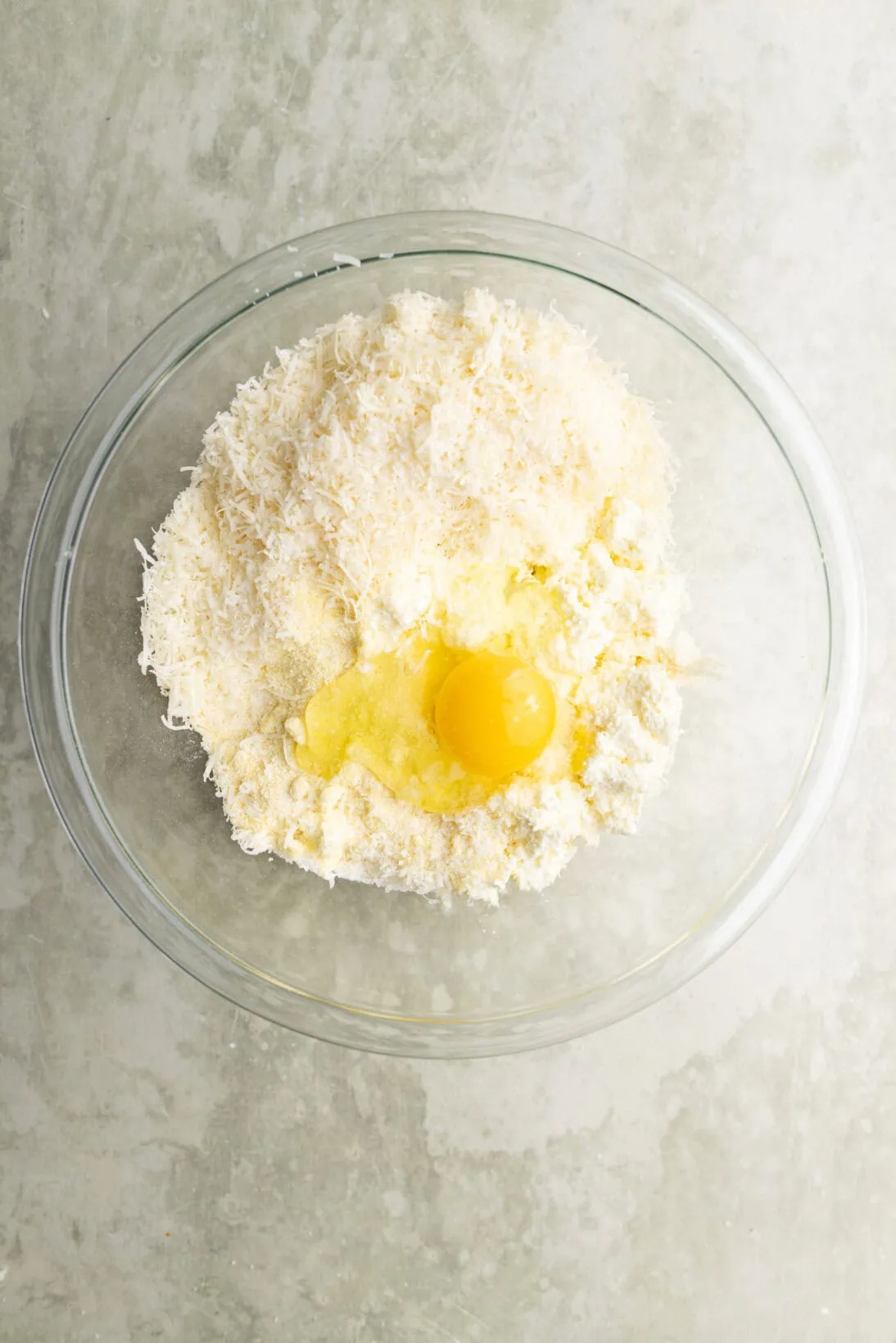

Form the Gnudi – In a large bowl, combine the ricotta cheese, Parmigiano Reggiano, a large egg, and semolina flour. Depending on how salty your ricotta is, add either a light or heavy pinch of kosher salt, along with a few cracks of fresh black pepper if desired. Mix everything together until the mixture is well combined.
Scoop out portions of the mixture, using either 1 tablespoon or 2 tablespoons, and roll them into balls with your hands. If the mixture is too wet and not holding together, return it to the bowl and mix in an additional 1/4 cup of semolina flour. Then, form the mixture into balls and roll each one in all-purpose flour, shaking off any excess. Place them on a sheet tray.
Place the tray of formed gnudi in the fridge to allow them to set.
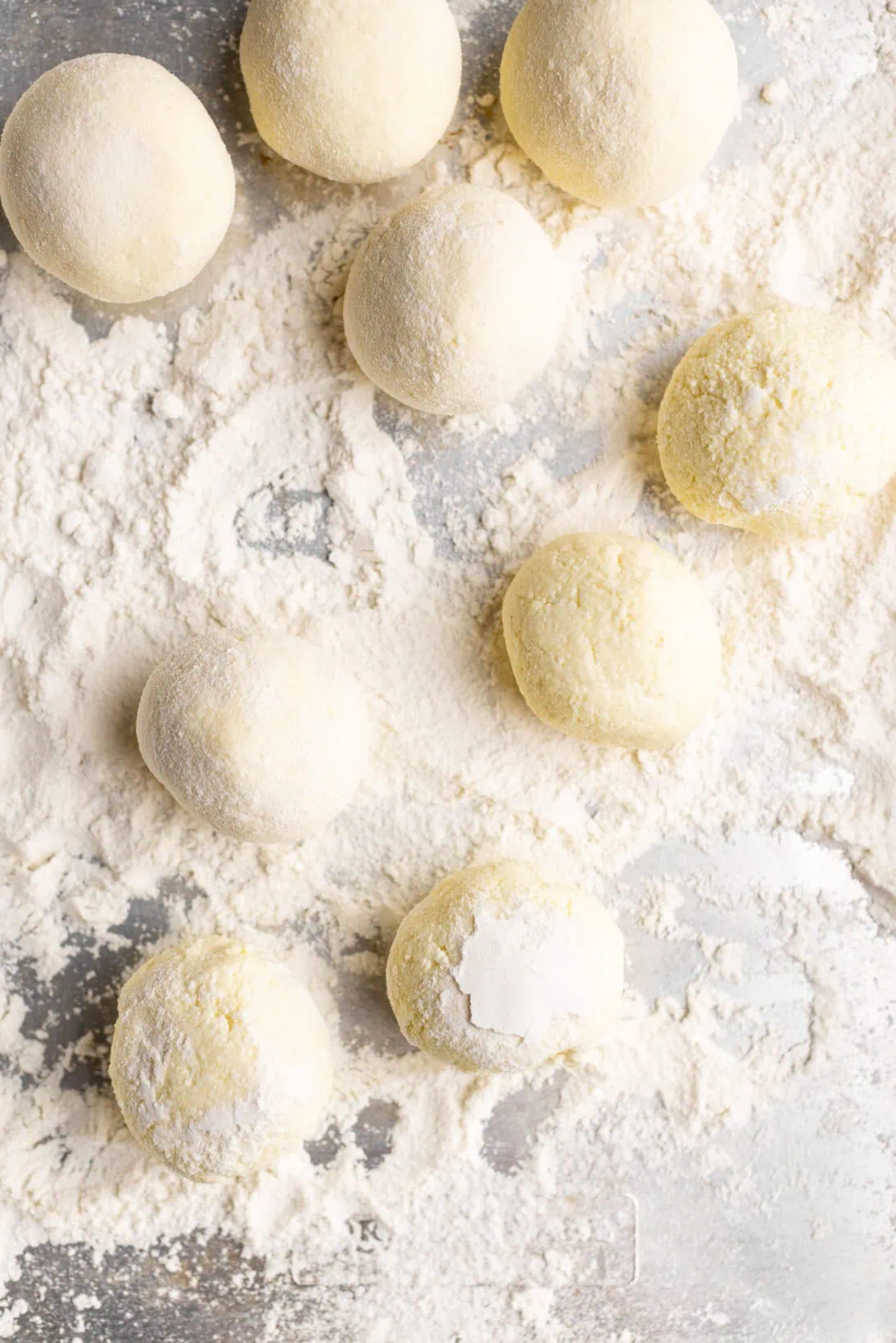
Cook the Gnudi – Bring a large pot of salted water to a simmer, then reduce the heat to low to keep the water just below a boil. Working with a few gnudi at a time, gently place them into the pot and cook until they start to float, about 4–5 minutes, depending on their size. I recommend gently moving them after about a minute to prevent sticking to the bottom of the pot.
Once cooked, remove the gnudi with a slotted spoon and transfer them directly to the sauce. (See sauce instructions below.)
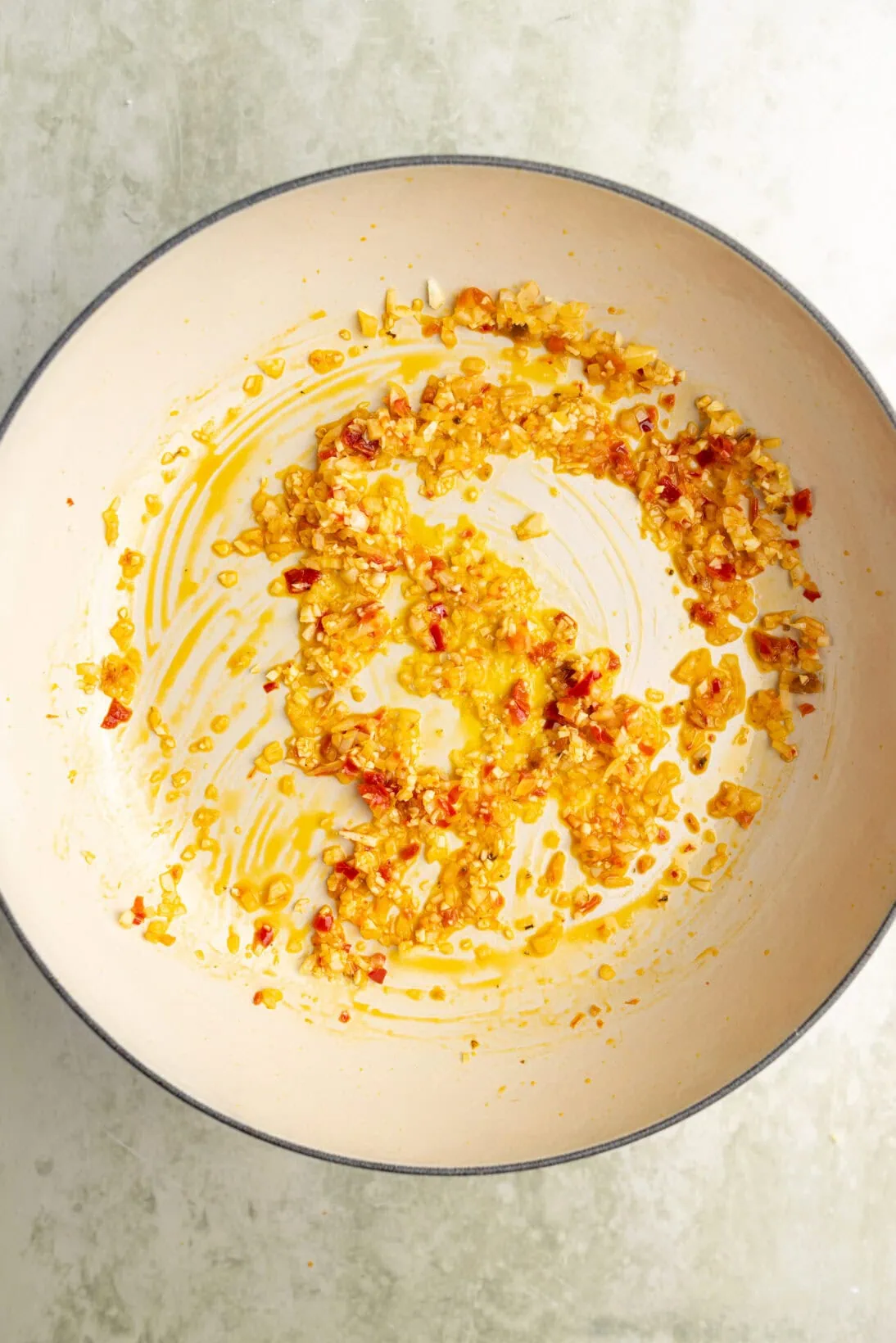
Saute the Base – In a large skillet or sauté pan over medium-low heat, add the extra virgin olive oil and Calabrian chilies. Once heated, add the onions and garlic. Cook for about 3–4 minutes, until the onions and garlic are soft and fragrant. If the garlic begins to brown, lower the heat.

Cook the Sauce – Add the canned tomatoes and basil, then salt to taste. Bring the sauce to a simmer, reduce the heat, and cover the pot with a lid. Let it simmer for 10 minutes.
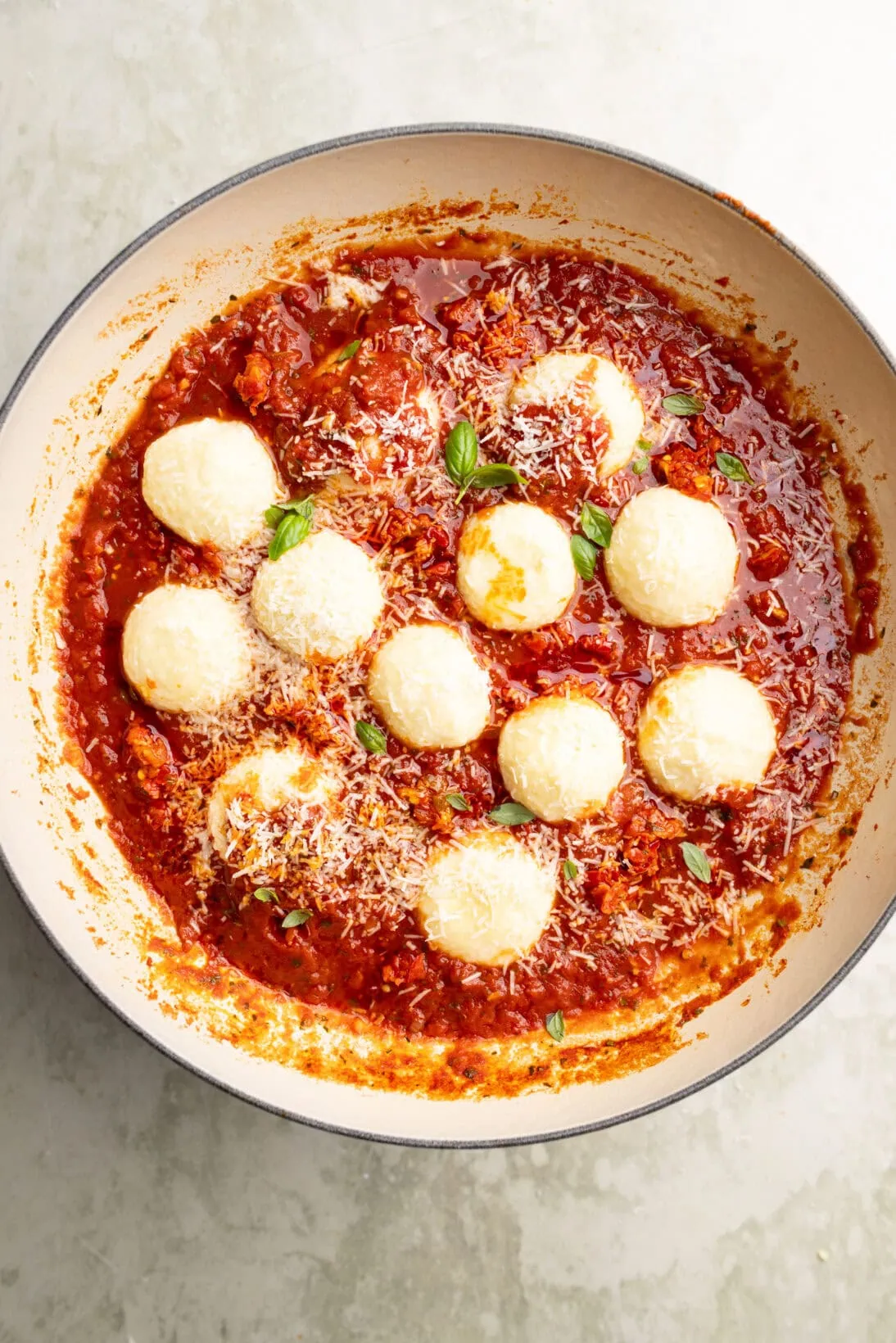
My gnudi fell apart during cooking, what went wrong?
A few things could have gone wrong.
1. It is possible that they did not cure long enough in the fridge. They may not form the outer skin needed to keep them from breaking open during cooking. To avoid this, test one gnudi before cooking the whole batch. If the test gnudi breaks open, let the rest sit in the fridge a bit longer.
2. Your ricotta was too wet, so it’s a bit late for the gnudi that are already formed. However, moving forward, you can add a bit more semolina to the mixture to firm them up.
Can I roll these in semolina instead of all purpose flour?
I found that using all-purpose (AP) flour, which is finer, yields a better outer skin on the gnudi. You can use semolina, but expect the texture to be a bit lumpier and bumpier.

These are best served immediately to enjoy the gnudi while they’re warm and gooey on the inside. Store leftovers in an airtight container in the refrigerator. For reheating, microwave them in 1-minute increments until warmed through.

Sorry if i missed it – how much flour do you add to the ricotta mixture? Thank you!
Nope you didn’t miss it the recipe card glitched, it should be fixed now its 1/2 cup but hold an additional 1/4 incase they are still too loose when forming